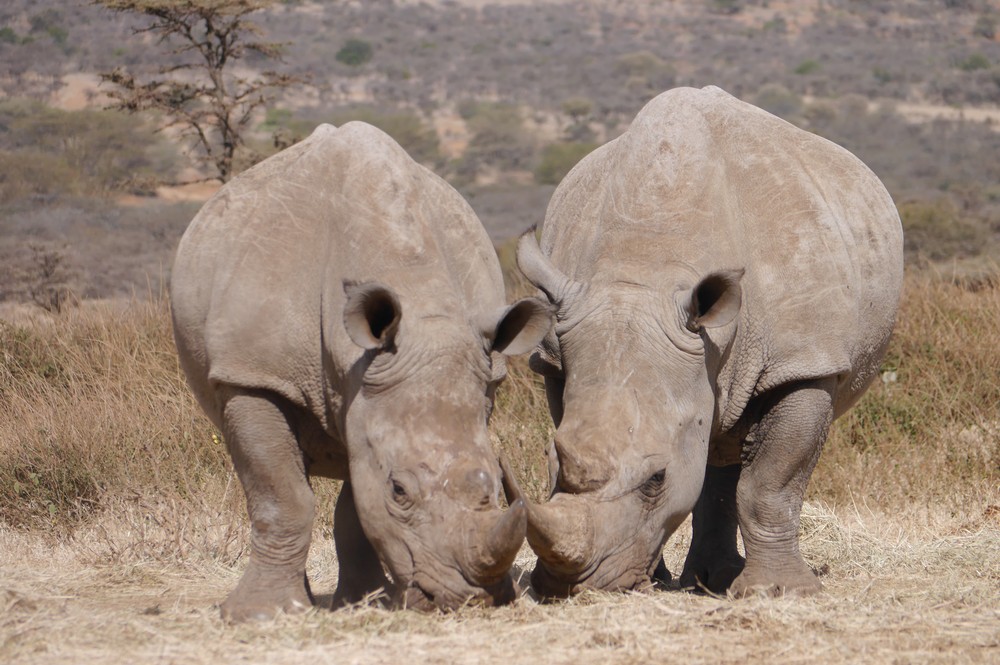Photo credit Cincinnati Zoo
Scientists at Cincinnati Zoo are planning on mating ‘Suci’, a nine-year-old Sumatran rhino, with her six-year-old younger brother, ‘Harapan’, in a bid to conserve the critically endangered species.
The Sumatran rhino is on the brink of extinction and urgent action is needed to ensure its future survival. In April 2013, the Sumatran Rhino Crisis Summit was held in Singapore with over 100 participants from across the globe. The Summit opened with the shocking news that rather than 130-190 Sumatran rhinos as previously estimated, there are in fact fewer than 100 individual animals remaining.
Suci and Harapan are the only Sumatran rhinos in captivity outside of Asia. They have just been reunited at Cincinnati Zoo, where they were born, to bolster breeding efforts. Elsewhere in the world, there are just eight captive Sumatran rhinos (read more in detail on our Thorny issues section).
The breeding programme will be undertaken by scientists at the Zoo’s Lindner Center for Conservation & Research of Endangered Wildlife (CREW) . Cincinnati’s captive breeding programme has been the most significant contributor to the survival of the Sumatran rhino in recent years. Suci is one of three Sumatran rhinos successfully born at the Zoo since 2001 and scientists are hoping they can achieve breeding success once again with Harapan and Suci.
Although the principle at CREW is to maximize genetic diversity and avoid inbreeding, in this case scientists are forced to make an exception or watch the species disappear altogether. ‘’No one wants to breed siblings, it is something we strive to avoid, but when a species drops below 100 individuals, producing more offspring as quickly as possible trumps concerns about genetic diversity.” said Dr Terri Roth, Vice President of Conservation and Science and Director of CREW at the Cincinnati Zoo.
 So why aren’t wild rhinos being caught for use in breeding programmes? Cincinnati Zoo explains that currently the Indonesian government is resistant to capturing the additional wild rhinos that are so desperately needed to enhance the gene pool and to exchanging rhinos for breeding so that inbreeding can be avoided. Furthermore, the permit process put in place to protect endangered species can be slow and cumbersome, often stalling efforts among global partners to exchange gametes for assisted reproduction attempts.
So why aren’t wild rhinos being caught for use in breeding programmes? Cincinnati Zoo explains that currently the Indonesian government is resistant to capturing the additional wild rhinos that are so desperately needed to enhance the gene pool and to exchanging rhinos for breeding so that inbreeding can be avoided. Furthermore, the permit process put in place to protect endangered species can be slow and cumbersome, often stalling efforts among global partners to exchange gametes for assisted reproduction attempts.
In 2000, Cincinnati successfully mated two Sumatran rhinos, Ipuh and Emi, who gave birth to Andalas in 2001, the first captive-bred calf in 112 years. They then went on to produce Suci and Harapan before the breeding pair passed away. In 2007, Andalas was sent by the Los Angeles Zoo (where he had been transferred to make way for further calves in Cincinnati) and the International Rhino Foundation (IRF) to the Sumatran Rhino Sanctuary in Indonesia. Andalas went on to make history by mating with Ratu, a wild-caught female, and producing Andatu, the first ever rhino calf born in captivity in Indonesia. These examples show that breeding successes are increasing in captivity.
Cincinnati Zoo staff members have now been working with the Sumatran Rhino Sanctuary staff for over a decade, exchanging information and transferring the technology developed at the Zoo, which proved key to the successful breeding effort.
The drastically low numbers of Sumatran rhino mean that inbreeding between such close rhino relatives may already be happening in the wild, but it is difficult to know, because the animals are so rare and faecal DNA studies are only now being carried out. Roth says ‘’ If the offspring of such a mating then bred with an unrelated rhino, the genetic diversity would resume in the next generation’’.
There are several examples of species whose populations have been brought back from the brink of extinction by captive breeding programmes and intensive conservation efforts. For example, the Southern white rhino numbered approximately 50 individuals at the beginning of the 20th century, before being bred up to today’s figures of around 20,405 animals. There are now several generations of Southern White rhinos with no apparent birth defects, although there must have been a high degree of inter-relatedness.
Another reason for maintaining a captive population of Sumatran rhinos in the USA is to avoid having all the rhinos in one place where they are at risk of disease, poaching and / or natural disaster that could potentially wipe out the entire captive population in one go. A captive facility in Peninsula Malaysia lost all five of its Sumatran rhinos due to an outbreak of trypanosomiasis (surra) in 2003.
Urgent government action is needed to secure the remaining wild populations of Sumatran rhinos and address issues such as poaching and habitat encroachment that are wiping out many of Indonesia’s species. However, the importance of the captive breeding programme cannot be understated; as well as increasing the number of Sumatran rhinos, it provides knowledge and understanding of the species to aid its future survival.
Click here to read the press release from Cincinnati Zoo
Photo credits Mark Carwardine, YABI / SRS









